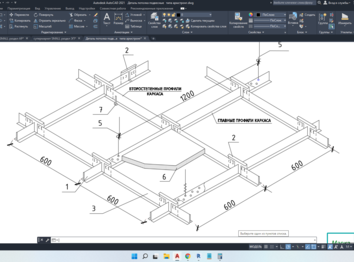Reconstruction and repair of engineering systems

- Added: 30.08.2014
- Size: 1 MB
- Downloads: 0
Description
Project's Content
|
|
|
|
|
|
|
|
|
|
- AutoCAD or DWG TrueView
- Microsoft Word
Additional information
Contents
Table of Contents:1. Source Data
2. Hydraulic calculation of cold water supply
2.1 Selection of water counter
2.2 Determination of required head for cold water pipeline operation
3. Internal sewer
3.1 Internal sewage routing
3.2 Calculation of internal house sewage network
3.3 Calculation of releases
3.4 Calculation of yard sewage network
4. Calculation of floor heating systems
List of literature used:
3. internal sewage system
Internal sewerage - a complex of devices for direct reception of waste water from various devices installed in the building and their diversion to the external sewerage network.
The internal sewerage system shall be equipped with all residential, public, production auxiliary buildings erected in the sewage areas of settlements.
In areas where there are no external sewage networks, the following are equipped with internal sewage:
- residential buildings with a height of more than 2 floors;
- medical institutions, sanatoriums, recreation homes;
- kindergartens, schools;
- Clubs, cinemas;
- baths and laundry.
Depending on the purpose of the building, the quantity and nature, the degrees of pollution of the effluents are distinguished by the following systems:
1) household or household-fecal sewage - for waste water removal from sanitary devices (toilets, shells);
2) internal drains - for removal of atmospheric and meltwater from the roof of buildings. Sometimes conventionally clean production water, drains from drinking fountains are also drained along it;
3) production sewage - for the disposal of production water (one or more depending on the composition of the discharged waste water). Conditions of joint withdrawal (not formation of sediment, poison, explosion, temperature - not more than + 40 ° С, if more than - coolers);
4) combined - for the disposal of domestic and industrial waste water under the condition of their joint treatment.
3.1 Tracing of internal house sewage system.
Sewage risers and drain pipelines from sewage receivers are applied on the building plan. All risers are numbered as follows: riser No. 1 - StK11; No. 2 - StK12, etc. When placing risers and routing the drain pipelines, it is necessary to comply with the requirements of SniP [6].
The risers shall be placed according to the recommended installation provisions.
Diameters of branch pipelines shall be assigned without calculation as per Annex 2 of these MUs. When several sanitary devices are connected to the discharge pipeline, the diameter of the latter is taken equal to the largest diameter selected from Annex 2 of these MUs. In this case, it is necessary to comply with the requirements of subsequent calculations. The material of pipes and shaped parts shall be selected in accordance with SniP recommendations and customer requirements. Riser diameters are assigned not less than diameter of the largest discharge pipeline connected to the riser. The riser shall have a constant height diameter. The sewage system shall be ventilated. To eliminate clogging on the network, audits and cleaning are provided, the number and places of installation of which are regulated. The length and the exhaust device shall comply with the requirements of the SniP and shall not exceed the data given in Table 7 [6].
![]() Лист 1,2.dwg
Лист 1,2.dwg

Similar materials
- 25.01.2023
- 25.01.2023
- 24.01.2023
- 09.07.2014



















